Kavya Gupta
Towards Reasonable Concept Bottleneck Models
Jun 05, 2025Abstract:In this paper, we propose $\textbf{C}$oncept $\textbf{REA}$soning $\textbf{M}$odels (CREAM), a novel family of Concept Bottleneck Models (CBMs) that: (i) explicitly encodes concept-concept (${\texttt{C-C}}$) and concept-task (${\texttt{C$\rightarrow$Y}}$) relationships to enforce a desired model reasoning; and (ii) use a regularized side-channel to achieve competitive task performance, while keeping high concept importance. Specifically, CREAM architecturally embeds (bi)directed concept-concept, and concept to task relationships specified by a human expert, while severing undesired information flows (e.g., to handle mutually exclusive concepts). Moreover, CREAM integrates a black-box side-channel that is regularized to encourage task predictions to be grounded in the relevant concepts, thereby utilizing the side-channel only when necessary to enhance performance. Our experiments show that: (i) CREAM mainly relies on concepts while achieving task performance on par with black-box models; and (ii) the embedded ${\texttt{C-C}}$ and ${\texttt{C$\rightarrow$Y}}$ relationships ease model interventions and mitigate concept leakage.
A Causal Framework to Measure and Mitigate Non-binary Treatment Discrimination
Mar 28, 2025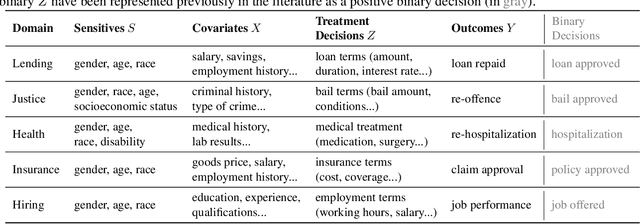



Abstract:Fairness studies of algorithmic decision-making systems often simplify complex decision processes, such as bail or loan approvals, into binary classification tasks. However, these approaches overlook that such decisions are not inherently binary (e.g., approve or not approve bail or loan); they also involve non-binary treatment decisions (e.g., bail conditions or loan terms) that can influence the downstream outcomes (e.g., loan repayment or reoffending). In this paper, we argue that non-binary treatment decisions are integral to the decision process and controlled by decision-makers and, therefore, should be central to fairness analyses in algorithmic decision-making. We propose a causal framework that extends fairness analyses and explicitly distinguishes between decision-subjects' covariates and the treatment decisions. This specification allows decision-makers to use our framework to (i) measure treatment disparity and its downstream effects in historical data and, using counterfactual reasoning, (ii) mitigate the impact of past unfair treatment decisions when automating decision-making. We use our framework to empirically analyze four widely used loan approval datasets to reveal potential disparity in non-binary treatment decisions and their discriminatory impact on outcomes, highlighting the need to incorporate treatment decisions in fairness assessments. Moreover, by intervening in treatment decisions, we show that our framework effectively mitigates treatment discrimination from historical data to ensure fair risk score estimation and (non-binary) decision-making processes that benefit all stakeholders.
Lifting 2d Human Pose to 3d : A Weakly Supervised Approach
May 03, 2019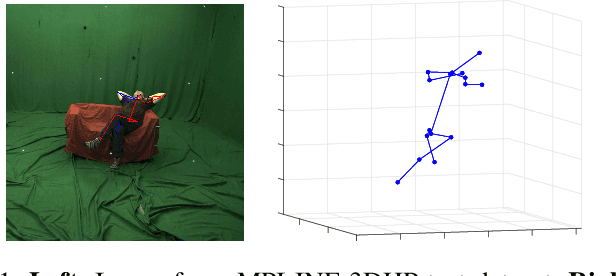
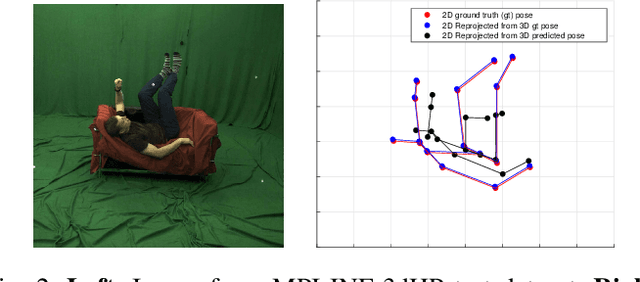
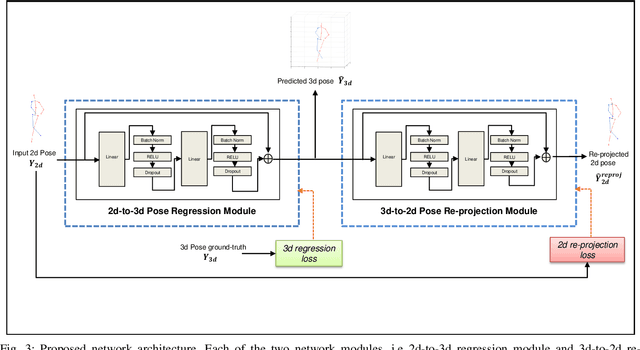
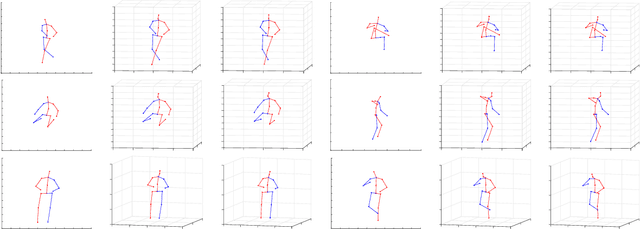
Abstract:Estimating 3d human pose from monocular images is a challenging problem due to the variety and complexity of human poses and the inherent ambiguity in recovering depth from the single view. Recent deep learning based methods show promising results by using supervised learning on 3d pose annotated datasets. However, the lack of large-scale 3d annotated training data captured under in-the-wild settings makes the 3d pose estimation difficult for in-the-wild poses. Few approaches have utilized training images from both 3d and 2d pose datasets in a weakly-supervised manner for learning 3d poses in unconstrained settings. In this paper, we propose a method which can effectively predict 3d human pose from 2d pose using a deep neural network trained in a weakly-supervised manner on a combination of ground-truth 3d pose and ground-truth 2d pose. Our method uses re-projection error minimization as a constraint to predict the 3d locations of body joints, and this is crucial for training on data where the 3d ground-truth is not present. Since minimizing re-projection error alone may not guarantee an accurate 3d pose, we also use additional geometric constraints on skeleton pose to regularize the pose in 3d. We demonstrate the superior generalization ability of our method by cross-dataset validation on a challenging 3d benchmark dataset MPI-INF-3DHP containing in the wild 3d poses.
Motion Blur removal via Coupled Autoencoder
Dec 24, 2018



Abstract:In this paper a joint optimization technique has been proposed for coupled autoencoder which learns the autoencoder weights and coupling map (between source and target) simultaneously. The technique is applicable to any transfer learning problem. In this work, we propose a new formulation that recasts deblurring as a transfer learning problem, it is solved using the proposed coupled autoencoder. The proposed technique can operate on-the-fly, since it does not require solving any costly inverse problem. Experiments have been carried out on state-of-the-art techniques, our method yields better quality images in shorter operating times.
Coupled Analysis Dictionary Learning to inductively learn inversion: Application to real-time reconstruction of Biomedical signals
Dec 24, 2018



Abstract:This work addresses the problem of reconstructing biomedical signals from their lower dimensional projections. Traditionally Compressed Sensing (CS) based techniques have been employed for this task. These are transductive inversion processes, the problem with these approaches is that the inversion is time-consuming and hence not suitable for real-time applications. With the recent advent of deep learning, Stacked Sparse Denoising Autoencoder (SSDAE) has been used for learning inversion in an inductive setup. The training period for inductive learning is large but is very fast during application -- capable of real-time speed. This work proposes a new approach for inductive learning of the inversion process. It is based on Coupled Analysis Dictionary Learning. Results on Biomedical signal reconstruction show that our proposed approach is very fast and yields result far better than CS and SSDAE.
 Add to Chrome
Add to Chrome Add to Firefox
Add to Firefox Add to Edge
Add to Edge